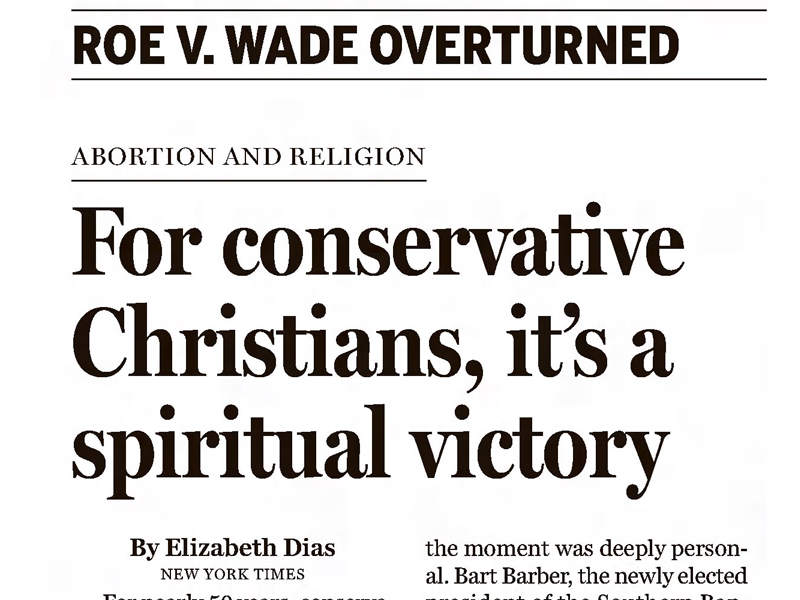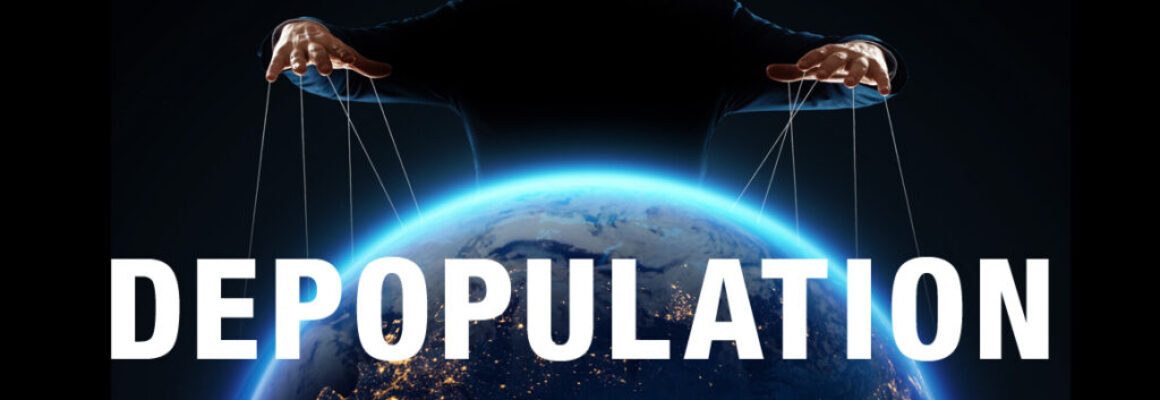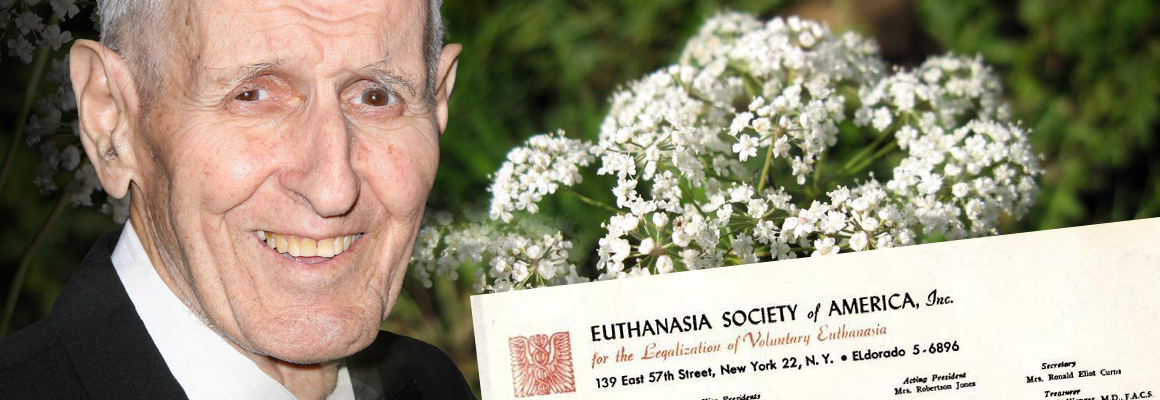
A SHORT HISTORY OF THE CULT OF DEATH IN AMERICA
In the realm of contentious social issues, few topics evoke as much debate and emotion as Euthanasia. Many historians are of the belief that the euthanasia debate as we know it was triggered by the works of 19th century British scientists Charles Darwin, Francis Galton and Herbert Spencer, the former lending his name to the scientific ideology known as Social Darwinism.
However, in practical terms, the origins of the euthanasia movement in the US stem from the founding in 1938 of The Euthanasia Society of America. Many famous names were active members, such as the British authors Julian Huxley (Brother of Aldous Huxley of Brave New World fame), Havelock Ellis, and even H. G. Wells. At this time, they included as part of their ideology involuntary euthanasia and the equally deplorable science of eugenics. However, debate in the US about euthanasia per se cooled after WWII when revelations of the Holocaust and the Nazi euthanasia program Aktion T4 came to light. The latter saw the wholesale murder by physicians of the sick, the elderly and disabled under the guise of Mercy Killings. Nevertheless, the organization persisted in the background and in 1952 a curious and familiar name appeared listed on its advisory board. It was none other than Margaret Sanger, the controversial women’s rights campaigner and founder of the Planned Parenthood Federation of America, what would in time become the nation’s biggest abortion provider. In 1961, the organization merged with the World Population Emergency Campaign, the brainchild of Dixie Cup magnate and advertising guru Hugh Moore. One does not need to be a scientist to connect the dots, nor understand the real motivations at play. It was at that point in history that the issues of euthanasia, abortion and planetary sustainability became intimate bedfellows.
The organization changed its name to the more consumer-friendly title Choice in Dying in 1991.
A decade or so earlier saw the emergence of what was to become an equally powerful voice in the pro-euthanasia lobby. The Hemlock Society was founded by Derek Humphry, a British journalist and author, and his wife, Ann Wickett. It gained particular popularity in the US, with chapters in numerous states.
The organization’s name itself is derived from the poisonous plant hemlock, famously used by the ancient Greek philosopher Socrates to end his own life. It is worth remembering, however, that Socrates’ actions were forced upon him as a criminal sentence, and had nothing to do with seeking release from pain or suffering.
The Hemlock Society’s mission has always been to promote euthanasia, eager to highlight the importance of human autonomy in such a deeply personal matter as death. However, such views conveniently ignore the fact that around the world euthanasia has long being conducted on an involuntary basis. Where was their choice? Where was the human autonomy for those victims? If for every genuine case, ten, a hundred, a thousand innocent people have to pay the price? Their right to life, not death, is surely no less valid.
Throughout its history, The Hemlock Society has undergone several transformations, both in name and structure. In 2003, the organization merged with another advocacy group, End-of-Life Choices, to form the Final Exit Network.
No discussion on euthanasia would be complete without mention of its most controversial proponent, Jack Kevorkian. Dubbed Dr. Death by the media, he was a trained pathologist who assisted in the deaths of over 130 people. It was later discovered that 60% of the patients he helped to kill were not suffering from any kind of incurable medical condition. Many of these instances were brought about by the use of a pseudo-medical contraption that Kevorkian christened the Thanatron or Death Machine. In 1991, his activities led his home State of Michigan to revoke his medical license to practice. This, however, did not deter Kevorkian who persisted to offer his euthanasia services. Things came to a head in 1999, when he was convicted of murder for assisting in the death of ALS patient Thomas Youk. He served just over eight years of a 10-25 years sentence before being released on parole, with the understanding that he abstained from further such activities. Kevorkian himself died of natural causes in 2011 at the ripe old age of 83. The Thanatron played no role.
The fundamental argument put forth by those who oppose euthanasia is called The Slippery Slope. At its core is the belief that once introduced strictly for those with terminal medical conditions, over time the door will be pushed open wider and wider until it is available regardless of reason. Furthermore, with governments around the world faced with the financial implications of an aging population, the appeal of euthanasia is obvious. Evidence from countries like the Netherlands and Canada where euthanasia has become strongly embedded leaves no doubt as to the veracity of that viewpoint. A textbook example is the case of Aurelia Brouwers, a 29 year old Dutch woman who ended her life by physician assisted euthanasia in 2018. She suffered from no terminal medical condition, though did have a history of depression and anxiety disorders.
The overturning of Roe v Wade by the Supreme Court in 2022, struck a decisive blow for the Pro-Life movement, finally recognizing the sanctity of life and protecting the unborn. However, a battle still rages with those determined to prove that a child only becomes a living entity at the moment of birth, and until then is nothing but a cluster of cells to be disposed of if desired.
In 2009, courtesy of Republican vice presidential candidate Sarah Palin, the phrase Death Panels entered the national vocabulary. While she was much maligned for the phrase in the mainstream media, anyone with experience of socialized medicine in Europe will be aware of the fate dealt to those unfortunates who are judged as Bed Blockers or with complex… a.k.a costly medical needs. In 2023, the renowned editor-in-chief of Forbes magazine Steve Forbes went on public record claiming that the specter of Death Panels still hangs over America, and is actively being pushed by forces at home and abroad.
Much of the liberal mainstream media and entertainment industry has jumped on the euthanasia bandwagon, lending their powerful voices to what has become known as the Cult of Death. They have branded the term Pro-Life as something akin to an obscenity. Social media companies have even taken to banning accounts espousing Pro-Life views. Such actions cannot help but be compared to the stifling of free speech in pre-war Germany, and the burning of books deemed unsuitable for public consumption.
As of today, euthanasia remains illegal in the US, although 10 states have adopted legislation that allows for the individual to end their own lives. Terms like Assisted Suicide, MAID or Assisted Dying have been skillfully used to distance the movement from the word euthanasia and the attrocities perpetrated by the Nazis under that name. Such candycoated words have only one purpose, simply to help the medicine go down…
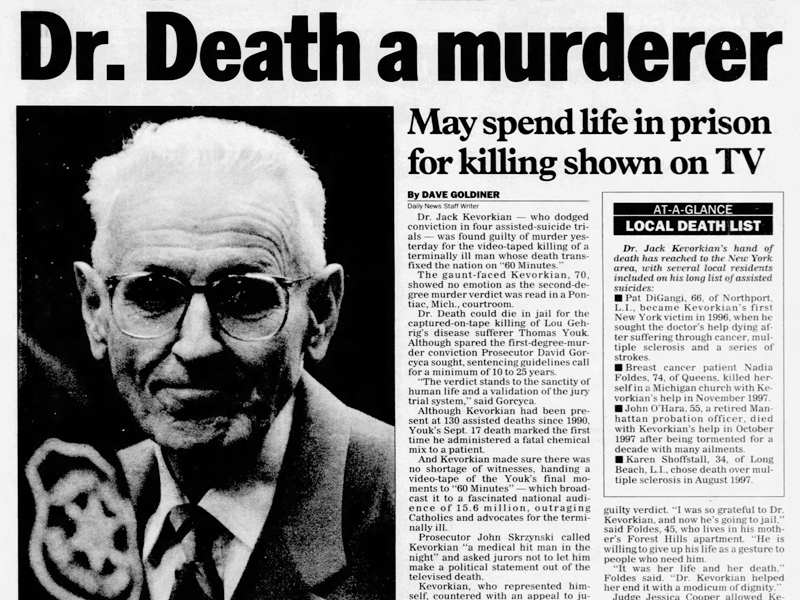
DAILY NEWS (1999)
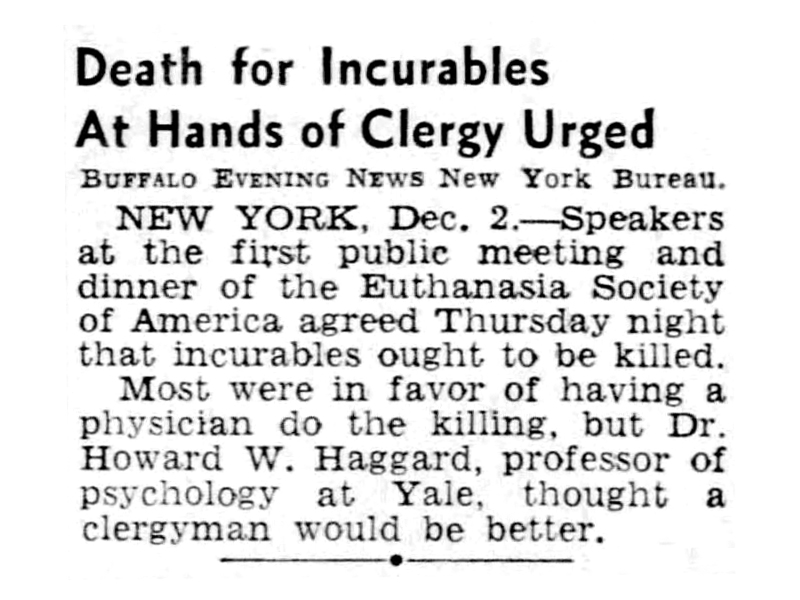
BUFFALO EVENING NEWS (1938)
